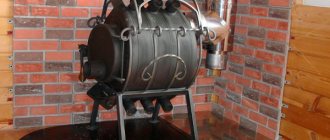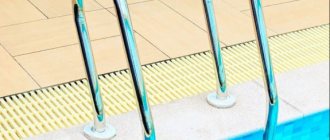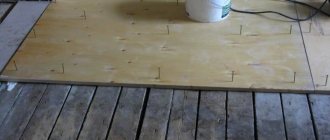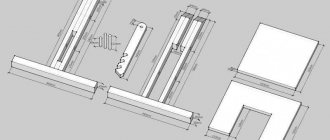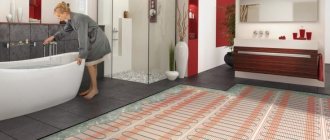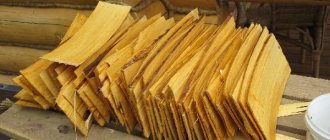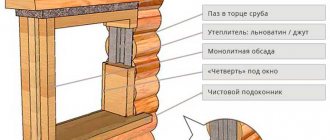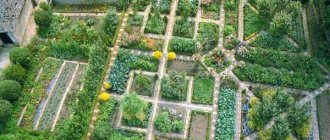- Do-it-yourself drip irrigation for your dacha at no cost: do it yourself easily and simply
- What is drip irrigation: features of the irrigation system
- Components of an irrigation system and their characteristics
- DIY drip tapes for irrigation system
- Features of using drip tubes with external droppers
- How to choose the right timers for drip irrigation
- How to make drip irrigation with your own hands from plastic pipes and hoses
- Drip irrigation from plastic bottles: features of the irrigation option
- DIY methods for organizing drip irrigation from plastic bottles
- Do-it-yourself root and surface drip irrigation from bottles
- Do-it-yourself drip irrigation for your dacha at no cost: do it yourself from medical droppers
- Review of ready-made drip irrigation systems, their characteristics
- Video: how to make drip irrigation with your own hands
Do-it-yourself drip irrigation for your dacha at no cost: do it yourself easily and simply
Today, the most popular irrigation option in a summer cottage is drip irrigation . Water falls directly under the roots of plants, so this system allows you to save on water resource consumption, facilitate the labor-intensive process of watering and increase productivity. This irrigation option can be purchased as a ready-made kit or made independently. Do-it-yourself drip irrigation for your dacha at no cost: make your own system from scrap materials.
How to water: options for an irrigation system at the dacha (read more)
Drip irrigation systems for plants are one of the most popular.
Advantages and disadvantages of drip irrigation
You can hear a lot of positive and negative reviews about drip irrigation, but those who are interested in this type of plant moisturizing should simply evaluate the actual advantages and disadvantages of the system.
Among the undeniable advantages:
• local method of irrigating plants, eliminating waste of water;
• the ability to adjust the level of soil moisture;
• reduction of weed growth;
• maintaining air-water balance;
• synchronous method of watering and feeding the root system;
• the automated process does not require constant human presence;
• does not require large energy costs;
What is drip irrigation: features of the irrigation system
Drip irrigation is a system of regular and uniform provision of moisture to the root system of plants, which helps moisten the soil directly under the planting. This type of irrigation can significantly save water. The soil does not become excessively waterlogged and does not become waterlogged between rows, as happens with other water supply options. This promotes the active supply of oxygen to the root system, which has a beneficial effect on plant growth, thereby increasing productivity.
Thanks to the drip irrigation system, water falls directly under the roots of the plant.
The drip irrigation system allows you to reduce the labor intensity of caring for green crops. And with an automated process, you can leave the area unattended for several days without worrying about the plants being left without water.
The equipment can be very diverse. But any system includes main pipelines for supplying and distributing water and outlet branches that supply water directly to the root system of each green space. The system is connected to a centralized water supply, storage tank (gravity-flow option) or to a pumping station. It can be equipped with automation, sometimes it is controlled manually. Depending on these criteria, system components are selected.
Drip irrigation device
The operating principle of drip irrigation is based on the movement of water along laid lines with targeted penetration into the roots. The following can be used as a source of liquid:
• wells and wells;
• water pipes;
• large container located on a hill.
The design of the drip system consists of the following elements:
• main hose laid along all beds;
• a filter, which is installed at the outlet of the water source and at the inlet of the main hose;
Components of an irrigation system and their characteristics
The main element of the system is the water supply source. It can be represented by a water supply system, a well or a water-measuring tank, which is installed at a height of at least 1.5 m. The next required element is a filter for drip irrigation with your own hands, thanks to which the system will not become clogged with various small debris.
Automatic watering system: how to make automatic watering at your dacha (read more)
The device can be vortex, disk or mesh. The latter option is considered more popular, which is due to its low cost. The vortex filter is used for irrigation systems of large areas. The disk element is characterized by excellent performance characteristics and high cost, which is not at all justified for small summer cottages.
Metal or plastic pipes are used to transport water.
If the source of water supply is a well or well, the system must be equipped with a pumping unit. The most appropriate option is considered to be a centrifugal type of device. The DIY drip irrigation distribution network consists of pipelines and hoses. For the main trunk network, metal or plastic pipes can be used. Metal products are strong, reliable and durable. However, the material is subject to corrosion, which will result in damage to the system.
Polyethylene or polypropylene pipelines are a more acceptable option. The products are characterized by strength, a smooth inner wall, which eliminates the possibility of deposits forming inside the system. Plastic pipes can withstand temperature fluctuations and the negative effects of aggressive substances.
DIY drip tapes for irrigation system
To organize outlets for each row, drip tapes in the form of a flat thin-walled tube, which has special devices for supplying water, are mainly used when arranging an irrigation system with your own hands. The tape is designed for pressure up to 1 bar. If it increases, the product may rupture. The maximum length of the tape is 100 m.
Drip tape for irrigation can be emitter or slotted.
You can buy slotted or emitter drip tape. In the first option, there is a labyrinth along the entire length of the product, which distributes water evenly. At certain distances there are holes in it to release water. This type of belt is prone to clogging, so it requires the installation of a good filter.
Inside the emitter tape there are flat droppers equipped with a labyrinth system, thanks to which water is supplied to the plants. Emitters can be located at different distances in the range of 10-35 cm, which is determined by the type of crops being watered. The lower this value, the higher the cost of the product. Emitter tape is more reliable than slotted tape, and this is reflected in the cost of the product.
When choosing a tape, you should pay attention to its thickness, which affects the strength and durability of the product. The thinnest element will last no more than one season and is suitable exclusively for greenhouses.
Features of using drip tubes with external droppers
The drip tube is made of HDPE and is rigid and durable. It is produced without holes and is intended for self-installation of external drippers. The wall thickness of the product is 0.9-1.2 mm. The material is resistant to UV rays. The drip tube can withstand pressure up to 6 bar.
Drip tubes are rigid and durable and can withstand pressures up to 6 bar.
External drippers are used when organizing drip irrigation at a dacha individually for each plant. To ensure normal operation of the system, it is necessary to have high pressure in the network. These devices can be connected through thin hoses or connected directly to the drip pipe.
There are several types of external IVs. Compensated ones are used for uniform irrigation with a very long drip tape, as well as in areas with a slope. They operate exclusively from a pressure system. Less prone to contamination by small debris. Uncompensated devices are used with a short length of drip pipe and on flat areas. This option is used for gravity flow systems from a tank. They can operate at low network pressure. There are also dropper pegs that are used for spot watering. The product is installed in the root zone of the planting.
On a note! For drip irrigation of tomatoes, cucumbers, eggplants and peppers, it is advisable to use drip tubes with external droppers.
The advantage of such pipes is that you can independently choose the installation step and regulate the volume of water released. The disadvantages include the high cost of the product (compared to drip tapes), the labor-intensive and time-consuming process of cleaning the droppers.
Drip tubes are commonly used for watering tomatoes, cucumbers, peppers and other vegetables.
How to choose the right timers for drip irrigation
When installing automatic drip irrigation, you should set a timer. It performs the following functions:
- controls the irrigation system;
- controls the operation of the pump motor;
- starts and stops water supply;
- ensures the operation of several lines simultaneously.
The timer runs on batteries. When you change them, all programs on it are saved. The device can be equipped with a water meter function. There are mechanical and electronic timers. The first option operates on a spring, providing continuous watering for up to 24 hours. Mode adjustments are made manually. Any action cannot be programmed for an indefinite time. Such a device can be used for small areas where the irrigation process is constantly controlled by the owner.
An electronic timer allows you to program the process. The device has mechanical or software control. The first option is set for one week with a watering duration of no more than 2 hours. The innovative device is a program-controlled timer with 16 commands. It can be used to irrigate crops that have different watering regimes. The equipment is equipped with an air humidity sensor. This expensive option (in comparison with other devices) is recommended to be installed for watering large areas, as well as in greenhouses.
For watering greenhouses and large areas, it is better to purchase an electronic timer.
If the system is connected to a centralized water supply or pump, you should choose a device with a solenoid valve, and for watering from a barrel by gravity - with a ball valve.
How to make drip irrigation with your own hands from plastic pipes and hoses
When arranging a drip irrigation system from ready-made components, it is necessary to opt exclusively for high-quality products so that it lasts for many years and money is not wasted. The irrigation scheme should be quite simple, with a minimum number of connectors. At the junctions of elements, the pressure weakens, which contributes to the accumulation of small particles of debris.
Installation of the system is preceded by the creation of a layout diagram of all its component elements, and this, in turn, depends on the layout of the site and the location of the beds. The diagram should indicate the source of water supply, the main pipe and outlet hoses so that you can calculate the amount of materials needed. It is better to use a plastic barrel as a source of water supply for drip irrigation. This material does not corrode, which will not only increase the service life of the product, but also eliminate the possibility of clogging the system with rust particles.
Polypropylene pipes for drip irrigation are more preferable.
A main pipeline, which can be made of metal or plastic, is connected to the water supply source. A more preferable option is to lay polypropylene drip irrigation pipes with your own hands. The main branch is located perpendicular to the beds and has a larger diameter than the outlet pipelines. All do-it-yourself drip irrigation elements made from plastic pipes are connected with compression fittings. After the shut-off valve of the water supply, a coarse filter is installed on the main line.
If drip tapes are used as outlet pipelines, then holes are drilled in the line for their fastening using starting fittings. The hoses are placed as close to the row of plants as possible. A plug is installed at the end of each tape. Next, the system is checked for functionality.
If you plan to lay the system underground, you need to dig a trench 30-70 cm deep under the pipelines. You need to fill the bottom with a layer of crushed stone and lay the assembled system. Next, it is tested, after which it is backfilled with soil. You can study the installation process in detail in the video of drip irrigation at the dacha.
Note! Drip irrigation pipelines laid underground are highly susceptible to clogging.
To make drip irrigation, you need to purchase high-quality components.
What does drip irrigation consist of: the main elements of the device
To build a drip structure yourself, you need to buy separate elements.
Individual elements for drip irrigation and their prices
All parts are connected in series to each other:
- disk filter;
- main pipe;
- a mechanism for enriching water with nutritional components;
- drip tapes;
- start connectors for connecting drip tapes;
- splitters for drip tapes;
- plugs for tapes.
Set of components for watering structure
Tape for drip irrigation: application features
A drip tape is a hose through which water moves. In this case, the liquid is purified using different filters. When determining which tape is better, you need to take into account certain characteristics
It is important to calculate the length of the drip tape, as well as the thickness of its walls. Operating conditions depend on these parameters
The distance between the tapes also matters. In this case, the best tape depends on the timing of plant ripening.
Special tape in a coil for self-installation of the system
You need to know how to mount the tape yourself. A drip tape is installed on the pipe, which is tightened with a special nut. To install such a structure, fittings are used. It is with their help that branching is carried out. To perform strip irrigation, such a structure must be mounted so that the holes in it are placed on top.
Complete set with fittings
Watering tape can be different. Here are the main types of drip tapes:
You can watch a video about this technology:
The labyrinth design has a specific structure
Slit product option
Emitter type products
To purchase such an element, you need to know how to lay it correctly and how much such tape costs. The drip system completely depends on the quality of this element. An important indicator is the price. The Tuboflex system deserves special attention; its cost varies between 2500-3000 rubles.
Tuboflex products
Start connectors for drip irrigation: how to use
To make functional drip irrigation you need to buy a starting connector. Installation for the tuboflex system is performed as follows. Using a marker, the surface of the main pipeline is marked for holes. At the same time, connectors and a starting valve are mounted to them. First, seals are placed in the holes, and then start connectors.
It is worth considering the principle of operation of the device with a tap. This connection diagram allows for manual adjustment
This is important if different crops with their own watering needs are planted in your greenhouse.
This is what standard start connectors look like
Irrigation drippers: manufacturing technology
For drip irrigation, you can build a structure with your own hands. You can see how to do this in the video below:
This can be a collapsible and compensated model, as well as an adjustable design with water supply control. The dripper irrigation system ensures uniform pressure on different parts of the hose. This ensures uniform watering of the plants.
A similar compensated model can be purchased in the store
You can use medical IVs. Watering indoor plants can be done from a plastic bottle. To make drippers in greenhouses, you first need to install a container and fill it with water. It is also necessary to install a hose and a submersible pump
It is important to calculate how much water you will need. For a tomato bush, 1.5 liters per day is enough, and for cucumbers – 2 liters. The dropper can be made in the form of a tape
This option is suitable if watering is designed for different crops. For example, for flowers and vegetables.
Submersible pump option for drip irrigation
Before installing droppers, it is necessary to make some calculations. If external compensated drippers are installed, then to determine the water flow, the soil is checked for depth after an hour. The price of the structure also depends on this indicator.
Assembling a drip irrigation structure
Drip irrigation from plastic bottles: features of the irrigation option
From plastic bottles and canisters you can make not only decorative elements for beautifying the territory. Of these, a full-fledged drip irrigation system is organized at the dacha site, which allows the soil to be moistened for 3-4 days.
Based on numerous reviews, it is advisable to perform drip irrigation from plastic bottles from containers with a volume of up to 2.5 liters. The saturation of water in the soil depends on the type of soil; this determines the number of holes in the container, thanks to which sufficient moisture will be ensured, which will eliminate the possibility of overfilling or underfilling. For example, sandy soils absorb moisture well. In this case, 1-2 holes in the bottle will be enough, and for heavy soils a larger number should be provided. Bottles with a capacity of 1 liter provide drip irrigation of cucumbers and tomatoes for 4-5 days, 3 liters for 10 days, 6 liters for 14-15 days.
It is advisable to organize drip irrigation using plastic containers in small areas. For large areas, it will take too much effort and time to refill the container with water.
On a note! The plastic system can be used to feed and fertilize various crops.
The principle of irrigating plants using plastic bottles.
The main advantages of creating drip irrigation from plastic containers:
- significant water savings;
- minimal financial costs for organizing the system;
- individual approach to each green space;
- simple installation, operation and maintenance;
- targeted supply of moisture and fertilizing.
The disadvantages of the system include the following:
- frequent clogging of the system due to the inability to install a filter;
- unaesthetic appearance of the site;
- constant manual replenishment of water;
- on the hot days of hot summer, the plastic system may not be able to adequately supply the plants with water.
Using plastic bottles you can make a complete irrigation system.
On a note! You can create a filter for each bottle by using nylon tights.
DIY methods for organizing drip irrigation from plastic bottles
There are several ways to create drip irrigation from plastic containers. The system can carry out surface and subsurface irrigation.
Underground homemade drip irrigation of roots using plastic bottles can be done in several ways. The most popular option is to dig containers between adjacent bushes to a depth of 10-15 cm, bottom down. Along the entire bottle, before it begins to narrow towards the neck, holes should be made using a gypsy needle or awl, 3 cm away from the bottom of the container. The average number of holes is 10-12 pcs. for containers of 2 liters. A container wrapped in thin fabric is dug into a previously prepared hole, filled with water and closed with a lid.
As the container is emptied, which occurs under the pressure of the earth, it may become deformed. To avoid this, you should pierce a hole in the lid to equalize the pressure, and you should also replenish water supplies in a timely manner.
The most popular option for irrigation from a plastic bottle is digging the container between the plants.
Another similar option is to place the container with the lid down. To use this method, you need to cut off the bottom of the bottle and screw the cap onto the neck. Holes are made throughout the entire area of the container, not reaching the top by 2-3 cm. The bottle, pre-wrapped in gauze, is placed in the hole and filled with water. To prevent debris from falling into the water, the container is covered on top with a previously cut bottom.
Do-it-yourself subsoil drip irrigation for your dacha can be organized using special oblong-shaped nozzles with holes. They can be bought in specialized stores for summer residents and gardeners. The nozzle is screwed onto the neck of the container instead of the lid. In this case, you should use bottles with a capacity of up to 2.5 liters, since there are no such devices for containers of 5-6 liters. The bottle, neck down, is inserted into the ground to the depth of the nozzle. The bottom of the container does not need to be cut off. After emptying the container, the tip is unscrewed, it is filled with water, and the manipulation is repeated.
Do-it-yourself root and surface drip irrigation from bottles
Using plastic containers, you can carry out root drip watering of the garden, directing drops of water directly under the root of each plant. For this method, it is better to choose a 1.5 liter container. A hole is made in the central part of the lid using a nail. Next, you should cut the bottom of the bottle at an angle of 30-40 degrees. The container itself will be located at the same inclination relative to the ground. The container is secured with several sticks and tape as close to the bush as possible, tilting the neck in such a way as to ensure that water gets directly under the rhizome.
Another option, often used in a greenhouse, involves watering the plant from a distance. To do this, take a small container and a regular ballpoint pen, previously cleaned of paste residues with gasoline or solvent. One end of it is tightly closed with a toothpick or match. The other is inserted into the opening of the bottle. It is better to seal the joint with plasticine.
Drip irrigation from plastic bottles can be root and surface.
It is necessary to make holes in the rod, the number and size of which will depend on the required intensity of moistening. It is directed under the root of the plant, depending on which the bottle is dug into the ground to the required depth. The container is filled with water and closed with a lid.
For a small area, you can make a hanging system. To do this, a support is built over the bushes, a metal rod or wire is stretched, from which the bottles will be suspended. A series of small holes should be made in the bottom or lid of the container, which depends on its location. The main advantage of this method is that the water will flow to the plant warm due to the fact that it is heated by the sun.
The container is hung above the bed at a height of 30-50 cm from ground level. The location of the bottle should be chosen based on the optimal contact of drops under the plant, and not on its leaves.
On a note! You shouldn't make a lot of holes at once. They can be added as needed to increase water supply.
If the irrigation area is small, then you can make a hanging system.
Drip irrigation installation (video)
Today we will show you what kind of drip irrigation tape was used during installation, how it was connected and what came out of it. We bought the tape last year. I was lucky enough to purchase Israeli-made Metafim, which has proven itself to be of high quality. It lasts for at least 3-4 seasons. The cost of the 3-kilometer-long bay cost 8.5 thousand rubles. Purchased in 2014. The emitter pitch is 30 cm, the thickness of this tape is 6 microns. A similar tape 2.5 kilometers long, 8 Microns thick also cost 8.5 thousand rubles.
A variety of components and kits for drip irrigation can be bought in this Chinese store.
Drip irrigation from China
Separately about the container with a volume of 1 cubic meter. It was originally planned for irrigation. But the garden turned out to be too large and it was used for fertilizer. Fertilizer will be diluted in it and supplied to a separate hose.
In a green barrel we make green biological cocktails from plants, mixtures of enzymes, sugar, etc. The most interesting thing is that everyone has the grass that you weed. You collect it in a barrel, it ferments for a week, then dilute it with 1 liter per 10 liters of water.
Browse products for inventors. Link to the store.
To ensure that purified water enters the system, a filter is purchased. This one was purchased here, the cost was 350 rubles. Then, a week later they went up in price and it became 700 rubles. This is a coarse filter. Nylon mesh inside. You can do without this filter. With it, the emitters will continue to serve in the cable strip and the cross-country ability will be better.
How drip irrigation works
Water flows from the container through a hose, enters a coarse filter, and then at the outlet it flows into the garden. Let's look at what happens next in the garden. Purchased for 250 rubles. distributor. Very convenient. It distributes the flow of water. You can cover and part of the garden will not be watered if necessary. At the end of the publication of the video of the channel “We live in the countryside”.
Plastic clamps are used to connect the hoses. All hoses have different widths. It was very easy to simply adjust, easy to put on and tighten. A very convenient thing that does not require any iron adapters. Everything is installed quickly.
DIY electronics in a Chinese store.
Hose 15 meters long. Before installation, we cut it into 0.5 meter pieces. They were mounted together with plastic tees. We insert the drip tape into the tee with the emitters facing up so that the water comes out freely and waters the ground. At the beginning we also tighten it with clamps. At the end, unscrew the tape where the water flows out and tighten it with a clamp. It turns out that the water flows in calmly and does not flow out at the end.
Gradually the pressure equalizes, that is, everywhere in each segment the pressure becomes the same. And the droplets begin to slowly irrigate your area.
Here is an example of how a drop of water falls on a potato bush. Thus, the entire area is completely watered. All plants grow healthy and strong. Below is a video about installing the system.
Demonstrative video on the topic of the article. More details here.
Do-it-yourself drip irrigation for your dacha at no cost: do it yourself from medical droppers
Another economical option is to install a drip irrigation system using medical droppers. It is rational to arrange it in areas with different varieties of crops, which should be watered in different quantities. This procedure is made possible due to the fact that the droppers are equipped with special control wheels that allow you to select the required intensity of liquid flow. The disadvantage of such a system is that the droppers quickly become clogged, which requires periodic flushing.
To create a drip irrigation system with your own hands, you should prepare:
- disposable medical droppers;
- hoses for distributing water over the beds;
- connecting and shut-off valves for droppers and hoses.
On a note! It is recommended to choose all components in a dark color, which will prevent water from blooming in the system.
Irrigating plants using medical drippers is a simple and economical option.
Before installing such a device, you should display on a piece of paper a drip irrigation scheme, which is carried out based on the location of the beds where irrigation should be provided. Based on this, surface distribution of supply pipes is carried out on the site. For this you can use polyethylene or rubber products. All elements are connected using tees. A plug must be installed at the end of each hose.
The system can be connected from a centralized water supply or from a storage tank located at a certain height. Also in this case, you can create automatic watering by installing a timer or controller at the beginning of the system. A hole is made in the distribution pipes opposite each plant into which the plastic end of the dropper is inserted. Tubes of elements are placed under each bush.
On a note! In order for the drip irrigation system from medical droppers to last as long as possible, a fine filter should be installed at the very beginning (after the water supply source).
Preparatory stage
For those who have not previously encountered the organization of homemade drip irrigation from medical droppers, special hoses or other available materials, it may seem that this is a fairly easy process, and there is no point in describing it in detail. Typically, such procedures mean creating holes in the guide devices, however, with such an implementation, you can make a significant mistake: uneven flows of water (and they are possible due to different pressures) will not be able to provide sufficient nutrition to all the plants in your garden.
That is why planning and organizing drip irrigation with your own hands from droppers is the most important stage that will affect the final result of your work.
To build an auxiliary structure using drippers for irrigation, you need to stock up on the following materials:
- a container for liquid (as a rule, large-sized barrels or cans are used for these purposes);
- pipe (metal or plastic, allowing you to change the direction of flow);
- drip hose;
- valve for providing liquid supply;
- stub;
- drill;
- connectors for pipes or hoses;
- knife (standard or stationery);
- welding fixtures.
Attention! It is not at all necessary to use all of the specified materials: your choice will depend on the type of plants, the specifics of watering and the size of the beds.
Connectors for pipes in an irrigation system
One of the most important materials used in this process will be droppers for drip irrigation. Since the quality of these materials will affect the efficiency of irrigation work, decide in advance which type of drippers will be most appropriate in your case. There are droppers with adjustable and unregulated liquid flow.
Advice: by choosing the first type of medical drippers for irrigation, you will be able to regulate the supply of liquid depending on the climate and planting characteristics. Such drippers will allow you to spend from 2 to 20 liters per hour for watering plants. If you want to ensure a uniform supply of water throughout the entire irrigation period, choose a compensating type of drippers.
Another important element of the irrigation design is a special tube that allows you to distribute liquid flows. Typically, the dimensions of such tubes are about 16 mm. Approximately 25 cm from the beginning of the tubes, the droppers themselves are attached for drip irrigation. The number of such structures will depend on the size of the garden plot.
In order to ensure a reliable and durable connection between the tube and the pipeline, you should use start connectors, which are sold in specialized stores.
In order to increase the area of liquid flow, special splitters are used. They allow you to direct flows in several directions at once, providing large areas of irrigation without the use of highly complex structures. The number of splitters used will depend on the number of homemade drippers intended for watering your area.
Tip: To determine the materials and supporting parts needed, draw a site plan with the exact placement of the beds and the proposed location of the pipeline. This will allow you to preliminary analyze the scope of work, find out what mechanisms you need, and also ensure the creation of an optimally located irrigation system on the site.
Do not forget that the effectiveness of drip irrigation from medical droppers will depend not only on the correct placement of such structures in relation to each plant on the site, but also on the quality of the liquid coming from the source. Even the smallest elements of rust will disrupt the operation of such a system and negatively affect the health of your plants. In connection with this risk, additionally consider the process of cleaning the constructed drip irrigation system for the garden. use filters for this .
Drip irrigation for the garden
Review of ready-made drip irrigation systems, their characteristics
The Zhuk drip irrigation system from a domestic manufacturer is one of the most popular among gardeners. It can be connected to a centralized water supply or to a storage tank. If you use the latter option, the kit includes a level tube, through which you can control the amount of water remaining in the barrel. Manufacturers produce “Zhuk” drip irrigation systems for 60 plants and 30 plantings. Usually the device is equipped with a timer and a filter. You can additionally buy “Zhuk” drip irrigation, designed for 20 plants.
The ready-made drip irrigation system “Zhuk” is the most popular on the domestic market.
“Kaplya” irrigation kits are equipped with emitter tapes with dropper pitches of 0.3 m. Thanks to the complex labyrinth of channels inside the dropper, the possibility of clogging is eliminated. The system is designed for an area of 25 m2. Can be connected to both a water supply and a storage tank. The controller is not included in the set.
A more reliable analogue of the Zhuk irrigation system is the Water Strider model, which is designed for drip irrigation of small greenhouses. The set consists of a 12 m long hose, a controller, 40 drippers and connecting elements. The system is organized for watering exclusively from the container, since the operating pressure in the network should not exceed 1 bar. The barrel is most often located at a height of 50 m.
The Belarusian drip irrigation system “Akvadusya” has several varieties suitable for watering areas of different sizes. It can be equipped with or without a controller, connected to a water supply or storage tank.
Drip irrigation "Urozhay"-1 is also produced with long-length emitter tapes. The system can be additionally equipped with a filter and automation. Another budget option is the Pomodor drip irrigation system with drip tubes, external drippers and a timer. The kit also includes special splitters to facilitate installation of the system. The most expensive model contains a controller and a submersible pump.
Scheme of operation of the drip irrigation system "Aquadusya".
The Istok irrigation system includes a 25 m drip tube with a pitch between droppers of 30 cm. The device is equipped with a filter and fittings necessary for connection to a storage tank. Some models are equipped with a controller and pump.
Today you can buy a drip irrigation system, which includes all possible elements. But such a solution requires significant financial costs. A more economical option is to create such a mechanism from ready-made components. In addition, you can make your own irrigation system for your dacha using scrap materials, such as plastic bottles and medical droppers. The choice depends on the nature of the territory, its area, the number and type of green spaces, personal preferences and financial capabilities of the owner.
Drip irrigation system options
A drip irrigation system can be assembled from components purchased in a store. In this case, in appearance and functionality it will be close to industrial designs.
Today in stores you can find special kits for organizing drip irrigation yourself, including hoses, as well as plastic valves with connectors for connection
Or you can use the inventions of folk craftsmen and build an irrigation system from plastic bottles or medical droppers. The choice of circuit and components depends only on your budget and skill level.
Traditional design
The most common drip irrigation scheme includes a water source (river, lake, well, well or just a barrel of water), a branched pipeline with plugs, drip hoses and a tap so that it is possible to stop the water supply if necessary.
If you plan to organize a drip irrigation system without the use of electricity, a barrel of water should be installed at a height of approximately 1.5-2 m from the ground, this will create the necessary pressure in the pipes
Hoses for drip irrigation, thanks to the special design of the labyrinths, provide the same water pressure throughout the entire line, which usually does not depend on the terrain. These hoses can serve you for up to 10 seasons.
You can also use thinner drip tapes, the service life of which is up to 4 seasons (thin-walled ones - 0.1-0.3 mm - are laid only on the surface of the ground and last no more than 1 season). But they have a serious drawback: drip tapes are often damaged by rodents.
To lay the pipeline from the water source to the garden bed, pipes and connecting fittings made of polypropylene or polyvinyl chloride are used. They do not corrode when exposed to water and most fertilizers, and do not release substances that can cause significant harm to your plants. The most popular pipe diameter for installing a pipeline used for watering a small garden, greenhouse or lawn is 32 mm.
If different plants have settled in your garden that require uneven soil moisture, you can install taps after the tees, which will allow you to limit the water supply to certain areas.
Any source of water, including rain, is suitable for organizing drip irrigation. Soft rainwater is especially beneficial for plants
If you use water from a well or borehole to water your plants, a fine filter will be sufficient. If the system receives water from a river or lake, a coarse filter will also be required.
If the water is not filtered, the drip holes will become clogged very quickly and the system will fail.
